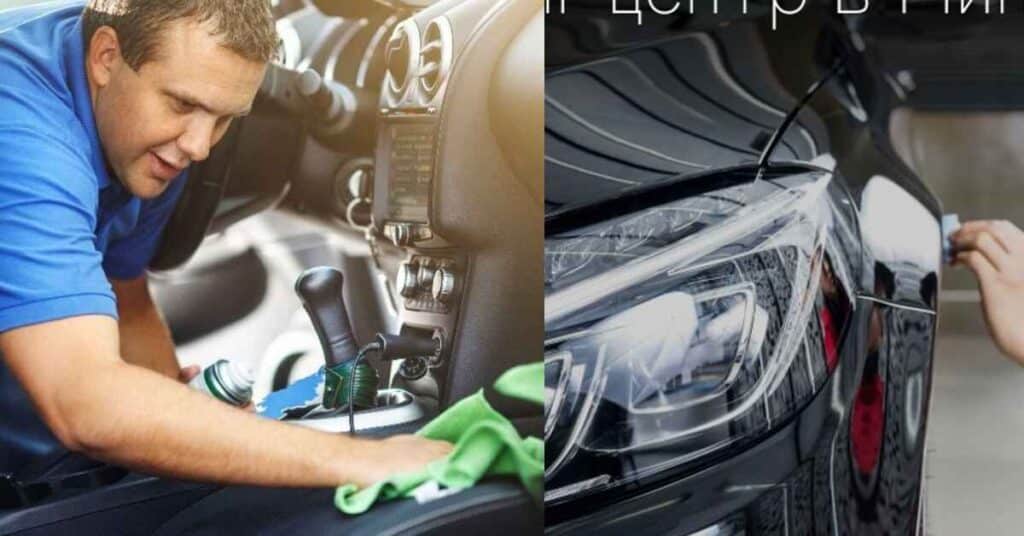Selling a car can be a daunting task, but with the right knowledge and preparation, you can navigate the process smoothly. If you’re a resident of Texas looking to sell your car, this comprehensive guide will provide you with all the essential information and steps to successfully sell your vehicle. From understanding the legal requirements to attracting potential buyers and finalizing the sale, we’ve got you covered.
Understanding the Legal Requirements

When selling a car in Texas, it’s crucial to understand the legal requirements. First, gather important documents like the vehicle title and a bill of sale. Ensure that the title is original and in your possession, as it is necessary for the transfer of ownership.
If the title is lost, you can request a duplicate from the Texas DMV. Next, advertise the car and negotiate the price with potential buyers. Once an agreement is reached, handle the payment securely, preferably through a certified method like a cashier’s check or electronic transfer.
It is also important to disclose the accurate odometer reading and provide a signed release of liability form to the Texas DMV to inform them of the sale.
To transfer ownership of the car, both the seller and the buyer must sign the vehicle title. The buyer will need to submit the signed title, bill of sale, and other necessary documents to the Texas DMV.
It’s worth noting that fees for title transfer may vary, so it’s recommended to check the current rates with the Texas DMV or the local county tax office. The processing time for title transfer can take a few weeks, depending on factors such as the workload of the DMV and the accuracy of the documentation.
It’s advisable to contact the Texas DMV or the local county tax office for more specific information regarding the title transfer process and expected timelines.
Read This Blog: How Much Does It Cost To Replace A Car Window
Know the Texas Vehicle Transfer Process
When selling a car in Texas, it’s crucial to familiarize yourself with the vehicle transfer process. This involves obtaining a vehicle title, understanding vehicle inspections, and obtaining a release of liability.
Obtaining a Vehicle Title
Before selling your car, you need to ensure you have a valid vehicle title. If you have misplaced or lost the title, you can request a duplicate from the Texas Department of Motor Vehicles (DMV). It’s important to have the title in your possession to transfer ownership to the buyer.
Understanding Vehicle Inspections
In Texas, vehicles are required to pass a safety inspection before they can be sold. It’s advisable to have your car inspected by a licensed inspection station to ensure it meets the necessary safety standards. Once the inspection is complete, you will receive a Vehicle Inspection Report (VIR) that you’ll need to provide to the buyer.
Obtaining a Release of Liability
To protect yourself from liability after selling your car, it’s crucial to obtain a release of liability. This form notifies the DMV that you are no longer the owner of the vehicle and releases you from any responsibility associated with it. The buyer will also need a copy of this form to complete the registration process.
Necessary Documentation for Selling a Car in Texas

To sell your car in Texas, you’ll need to gather the required documentation. The following documents are essential for a smooth transaction:
Vehicle Title and Registration
Ensure you have the original vehicle title in your name. If there is a lienholder, you must contact them to obtain a release or payoff statement. Additionally, have the vehicle registration handy as it may be required during the sale.
Odometer Disclosure Statement
Complete an Odometer Disclosure Statement, also known as Form VTR-40, which verifies the accuracy of the car’s mileage. Both you and the buyer must sign this form to comply with federal and state laws.
Bill of Sale

A bill of sale serves as a legal document that records the sale and transfer of ownership. It includes details such as the buyer and seller’s information, vehicle description, sale price, and date of sale. You can find templates for a bill of sale online or obtain one from the DMV office.
Release of Liability Form
To protect yourself from any liability associated with the vehicle after the sale, complete a Release of Liability form. This form informs the DMV that you are no longer responsible for the car and transfers the liability to the buyer.
Preparing Your Car for Sale

Preparing your car for sale is essential to attract potential buyers and maximize its value. Start by thoroughly cleaning both the interior and exterior of the car, ensuring it looks its best.
Address any minor cosmetic issues, such as scratches or dents, and consider getting a professional detailing job to make the car shine. Additionally, gather all relevant documentation, including service records, to demonstrate the car’s maintenance history and build trust with buyers.
Finally, consider getting a pre-sale inspection to identify any mechanical issues that need to be addressed before listing the car for sale.
Pricing your car appropriately is another crucial aspect of preparing it for sale. Research the market value of similar vehicles in your area to determine a competitive asking price.
Factors such as the car’s age, mileage, condition, and any additional features or modifications should be taken into account. It’s important to strike a balance between setting a fair price that attracts potential buyers and ensuring you get a reasonable return on your investment.
Consider advertising the car through online platforms, local classifieds, or social media to reach a wider audience.
Provide accurate and detailed information about the car’s specifications, history, and condition, and include high-quality photos that showcase its best features.
Also Read This Blog: How Much Does It Cost To Straight Pipe A Car
Gather Essential Information and Documentation

Before listing your car for sale, collect all relevant information and documentation to provide potential buyers. This includes the vehicle history and maintenance records, service and repair documentation, and any warranties or guarantees that may be applicable.
Assessing the Car’s Condition
Conduct a detailed inspection of your car to assess its condition. Check for any mechanical or cosmetic issues that may impact its value or appeal to buyers. Addressing these issues beforehand can increase the chances of a successful sale.
Determining a Fair Selling Price
Researching the market values of similar cars in your area is crucial for setting a competitive selling price. Take into consideration factors such as the make, model, year, mileage, condition, and any additional features or modifications. Online resources and car valuation websites can provide valuable insights into the current market prices.
Advertising and Attracting Potential Buyers
Creating an Effective Advertisement
Craft a compelling vehicle description that highlights the key selling points of your car. Mention its unique features, recent repairs or upgrades, fuel efficiency, and safety features. Use descriptive language to paint a vivid picture in the buyer’s mind. Accompany the description with high-quality photos that showcase the car’s exterior, interior, and notable features.
Utilizing Online Platforms and Local Resources

To reach a wider audience, consider listing your car on popular online classifieds and marketplaces. Websites like Craigslist, Auto trader, and Cars.com are great platforms to connect with potential buyers. Additionally, leverage social media platforms and online car forums to spread the word about your car sale. Explore local advertising options such as community bulletin boards or newspapers to reach buyers in your area.
Interacting with Potential Buyers
Responding to Inquiries and Screening Buyers
When potential buyers reach out with inquiries, respond promptly and professionally. Answer their questions in a detailed and friendly manner, providing all the necessary information they need. It’s also important to screen buyers by verifying their information and intentions. Be cautious of potential scams or fraudulent activities.
Conducting Test Drives and Negotiating the Sale
Once you have interested buyers, it is time to arrange test drives. Ensure safety during test drives by accompanying the potential buyer or asking for their valid driver’s license and proof of insurance. During negotiations, be open to reasonable offers and be prepared to counteroffer. Consider factors such as the car’s condition, market value, and any repairs or improvements you’ve made.
Handling Payment and Transfer of Ownership

Once you and the buyer have agreed on a price, it’s essential to handle the payment and transfer of ownership securely. It’s advisable to accept payment in the form of a cashier’s check, money order, or electronic transfer for larger transactions, as these methods offer more security. Once the payment is received, sign over the title and provide the buyer with all necessary documents, including the bill of sale and release of liability form.
Finalizing the Sale and Transfer of Ownership
Completing the Necessary Paperwork
To finalize the sale and transfer ownership, complete the required paperwork. Sign and date the back of the vehicle title, providing the necessary information. Fill out the bill of sale accurately, including all relevant details. Ensure both you and the buyer sign and retain a copy for your records. Additionally, sign the release of liability form to officially release yourself from any responsibility associated with the vehicle.
Canceling Insurance and Updating Records
Contact your insurance provider to cancel your car insurance policy once the sale is complete. Provide them with the necessary information, including the buyer’s details, to ensure a seamless transition. Inform the DMV and update your vehicle registration records accordingly. This step ensures that you are no longer held liable for the vehicle and avoids any future complications.
Ensuring a Smooth Transaction and Buyer Satisfaction

To ensure a smooth transaction and buyer satisfaction, provide the buyer with all the necessary documentation and records. This includes the signed title, bill of sale, release of liability form, and any relevant service or maintenance records. Additionally, consider offering a warranty or guarantee, if applicable, to provide the buyer with peace of mind and build trust.
In conclusion, selling a car in Texas involves understanding the legal requirements, preparing your car for sale, attracting potential buyers, and finalizing the sale and transfer of ownership. By following the steps outlined in this comprehensive guide, you can navigate the process successfully and achieve a smooth and successful car sale.
Remember to gather the necessary documentation, set a fair selling price, create effective advertisements, and interact with potential buyers professionally. With careful attention to detail and thorough preparation, you can sell your car with confidence and ease in the state of Texas.
Frequently asked Question
How to privately sell a car in Texas?
Gather necessary documents, advertise the car, negotiate the price, handle payment securely, and transfer ownership by signing over the title.
How do I let Texas DMV know I sold my car?
Complete a Release of Liability form to inform the Texas DMV of the sale and transfer of ownership.
How to transfer ownership of a car in Texas?
Both the seller and buyer should sign the vehicle title, and the buyer needs to submit the signed title and other required documents to the Texas DMV.
Do you need a copy of the title to sell a car in Texas?
Yes, you need the original vehicle title to sell a car in Texas. Obtain a duplicate from the Texas DMV if the original is lost.
How much does it cost to transfer a car title in Texas?
The title transfer fee in Texas is typically $33, but fees may vary. Check the Texas DMV website or contact your local county tax office for current information.
How long does it take to transfer a car title in Texas?
Title transfer processing times in Texas can vary, but it generally takes a few weeks. Contact the Texas DMV or your local county tax office for specific information.
Final Thoughts
Selling a car in Texas involves a few important steps. First, gather all necessary documents, such as the vehicle title. Advertise the car and negotiate the price with potential buyers. Once you have agreed upon a price, handle the payment securely.
To transfer ownership, sign over the title to the buyer and provide a bill of sale. Additionally, complete a Release of Liability form to inform the Texas DMV of the sale. Remember, it is crucial to have the original title in your possession, but you can request a duplicate if needed.
Keep in mind that fees for title transfer may vary, so it is wise to check the current rates. While processing times can vary, expect a few weeks for the title transfer to be completed.







